|
|
|
Radschool Association Magazine - Vol 37 Page 8 |
|
Privacy Policy | Editorial Policy | Profit Policy | Join the Association | List of Members | Contact us | Index | Links |
|
|
|
Pilot Officer Ronald William Betts (1947-71).
Ron Betts
was born in Launceston, Tas, in 1947. Like a lot of young blokes of his
time, the only thing he ever wanted to do was fly aeroplanes.
In 1958, Ron’s family moved to Hobart where his interest in flying
continued to grow. He and some school friends built a small rocket which
they flew and which caused a bit of havoc and got a mention in the local
After finishing High School in 1965, he left Tassie for Cooranbong in NSW where he attended Avondale College and did his aviation theory subjects. Finishing and passing those in 1966, he hitch-hiked to Cairns then flew to PNG where he started work as a clerk with the Administration Government. His father, Mannie Betts, who had been a radio operator with the RAAF in PNG during WWII, knew a few people and helped him get the job. While there he spent all his spare funds on learning to fly and eventually obtained his PPL.
In 1968, with his PPL and a few hours in his log, he applied to the RAAF to become one of their pilots and was successful. He did his basic training at Point Cook on the Winjeel.
Then it was over the Pearce to complete his training on the Vampire where he graduated in June 1969.
After Pearce, in September, 1969, he was posted to a
fighter squadron where he found the going a bit tough so he was sent to
5 Squadron at Fairbairn to train on the Iroquois. Aivars Vilcins, who
was on the same pilot’s course as Ron, and who had been posted to
Canberra from Pearce, says he can remember Ron coming to 5 Sqn some time
after they
Peter Armstong, who was on the Pilot’s course after Ron says “due to the way the courses were organised, we ended up on the same helicopter course in Canberra and a few months later, in July 1970, we were sent to 9 Squadron in Vung Tau”.
Graeme Chalmers, was also on the Iroquois conversion course and was posted to 9 Sqn at the same time as Ron. He said, “Ron and I became great mates while on course and while in Vung Tau we went to Penang in Malaysia together for a memorable R and C (Rest and Convalescence) breather”.
|
|
Iroquois conversion course, Fairbairn 1969. |
|
|
|
Back Row: Ron Betts, Mark Julienne, John Buchanan, Graeme Chalmers, Peter Drury, Peter Armstrong. Front Row: John Millhouse, John Dahlitz, Peter Mahood, John Dunn, John Pollock. |
|
Following is a description of the terrible incident as told by mates of Ron’s who were also involved in the battle.
On the morning of the 20 March 1971, 9 Sqn was required to carry out a “Sniffer” flight which proved to be a routine task with few readings. The “Sniffer” was an electronic personnel detection device, developed by General Electric for the US Army Chemical Corps and was mounted in the helicopters. It detected effluents unique to humans such as those found in urine and sweat. |
|
Early in the afternoon, after the completion of the Sniffer flight, two Bushranger aircraft, Bushranger 71 and Bushranger 72, (with B73 and B74 in reserve) were called to support 2 platoon C Coy, 3RAR, which had run into a bit of trouble to the north of Xuan Moc, Phuoc Tuy.
On the first sortie, Flg Off David Freeman and Plt Off Ron Betts were the pilot/co-pilot of B71 and Flg Off Stuart Bryce went along for the ride.
C Coy was pinned down by heavy fire from enemy-held bunkers.
Back Row L-R: Dave Freedman, Chris Peters, Peter Armstrong, Stan Clarke, Phil Smith, Mick Castles. Front L-R: Iviars Vilcins, Ron Betts, Ron Bishop, Graeme Chalmers.
|
|
Their platoon commander and
signaller had been wounded and were separated from the main column.
Also, the main group had run out of smoke grenades and on their first
sortie, Bushranger 71 (B71) was
Retreating blade stall is a hazardous flight condition in helicopters where the rotor blade rotating away from the direction of flight stalls. Retreating blade stall is the primary limiting factor of a helicopter's airspeed and the reason that helicopters can only fly slightly faster than 200 knots.
|
|
B71 flipped, reversed its turn and lost altitude, heading straight for the escarpment. Dave Freedman recovered the aircraft which hobbled away but was forced to fly practically over the enemy. The aircraft returned safely to Nui Dat to rearm and refuel and it has been said that Ron was keen to get back to the battle site in order to get his hours up. B71 subsequently returned to the battle, this time without Stuart Bryce.
Back at the battle site, B71 was endeavouring to drop
smoke grenades to the men on the ground when it came under fire from .50
calibre heavy machine guns. Rounds from these guns hit the aircraft 47
times, some of which also struck Ron. B72 was not able to provide cover
because of the unknown position of the friendlies. The damaged aircraft
was forced to land at a nearby fire support base from which Ron was
medivaced to the giant US 24th
The pilot of the “Dustoff” aircraft that transported Ron to the hospital was his mate Peter Armstrong.
Peter Armstrong remembers Ron as a very popular and well liked bloke and in Vietnam, “his piano playing after a few beers was enjoyed by many. His death really shook 9 Sqn. I was the dustoff (medivac) pilot that day and saw the action in which he was killed. I picked him up and took him to the hospital which, unfortunately, was in vain. I will never forget that day.”
“When the powers that be finally decided to give the Vietnam vets the so called welcome home march, they had Australian flags with the names of all the ‘Killed in Action’ men engraved (one for each). I carried the one with Ron’s name on it and was proud to do so. I hope the flag eventually reached his family, as it was meant to.”
Ron’s body was repatriated to Australia and buried at the Carr Villa General Cemetery, in Launceston, Tasmania
|
|
In July or August
1971 shortly after he had returned to Australia, Graeme Chalmers flew
“Many years after Ron’s death I flew on the RAAF/USAF Exchange Program and spent 2½ years flying big choppers in America in the Combat Search and Rescue role. The motto of my then Unit depicted an angel with wings about a globe and the wording was “THAT OTHERS MAY LIVE”.
Freddo Freedman, Ron and the crew in A2-383 on the day Ron was shot, were unknowingly following the tenet of that motto and displayed the greatest of Australian military tradition, to be prepared to give one’s life for others (in this case the Australian soldiers who were killed and those that were still alive and fighting the enemy for their very lives).
Ron therefore, made the ultimate sacrifice.”
In May 2009, more than 33 years since the end of the Vietnam War, the Lindisfarne (Hobart) RSL opened the Tasmanian Vietnam Veterans’ Memorial at Anzac Park on the banks of the Derwent River, to pay tribute to the 16 Tasmanian men who were killed during the conflict. The memorial comprises a central stone and plaque, surrounded by 16 individual plaques, one for each of the men.
The Tasmanian Premier David Bartlett unveiled the memorial at a ceremony in front of 200 VIPs, Vietnam veterans and family members. The VIPs included six former Air Force Vietnam veterans.
Ron’s sister, Judith Stanton, said the memorial unveiling was a dream come true. The memorial gave her somewhere to go to remember his life. “It is beautiful, a real tribute to all the men who lost their lives in Vietnam,” she said.
Her brother, when he was younger, always dreamed of flying for his country. “It was his father’s dream as well but, because of bad health, he couldn’t continue, so Ronald lived it for him,” she said “It is something that he wanted to do. It was his dream and he enlisted to serve his country." I feel very proud of him. “This new memorial will now give the dignity that these 16 young Tasmanians who gave their lives in the course of duty deserve.
“We give thanks for a belated but fitting memorial.
|
|
The aircraft in which they were flying, Iroquois
A2-383, started life as a D model and initially
After Ron’s tragic death it was sent back to Amberley (Nov 1971) where it was repaired then sent to PNG where it collided with A2-915. Once again, it was sent back to Amberley for repair and eventually written off in March 1974.
Peter Haran has written a book called Shockwave which is the graphic
story of the pilots and crews of Australia's fleet of Iroquois
helicopters during the Vietnam War, the Dust-offs and the Bushrangers,
their triumphs and losses, and the legacy of that experience that
There is extensive coverage of the action in which Ron was killed in this book, (pages 54-70).
If you wish, you can order a copy of the book HERE.
Tony Cox was a member of the platoon that was caught in the battle and he remembers it as a terrible day. On the 16th October, 2011, he organised a reunion, which was held in Canberra, to commemorate 40 years since the event. The primary event was a remembrance service held at the Vietnam Veterans National Memorial on the Sunday morning.
You can see photos of the other blokes who were in the engagement HERE.
|
|
|
|
The Vietman Veterans’ Memorial, Canberra.
|
|
During the second world war, Ron’s father, Norman Lindsay “Manny” Betts served with the RAAF in PNG as a radio/morse code operator.
He was born in 1915 in Oaks, a small settlement in northern Tasmania, not far from Launceston and enlisted in November 1941 and was discharged in December 1945 with the rank of Cpl.
After the war, Norm
returned to Tasmania. He was a keen jazz muso and later played at The
Launceston Hotel and Wrest Point in Hobart. He had
It seems the RAAF is in the blood of the Betts family, Manny’s grandson is currently into his second year of training at ADFA which makes 3 generations of the Betts family to have or are still serving with the RAAF.
|
|
A-2 BELL UH-1 IROQUOIS.
|
|
|
|
No 9 Squadron, under Sqn Ldr R A Scott, received the first aircraft on October 29 1962. These aircraft were serialled A2-384 to A2-391. The Iroquois began life as a troop support aircraft for the Army and this was to become a major role for No 9 Squadron.
In December 1962 a second batch of eight UH-1Bs were ordered and delivered twelve months later as A2-714 to A2-721. In May 1964, No 5 Squadron was formed at Fairbairn with four aircraft and deployed to Malaysia to provide support during the confrontation period with Indonesia. A third batch was delivered in late 1964, A2-1018 to A2-1025. These were fitted with the more powerful Lycoming T53-L-11 engine which produced 1,100shp engine replacing the previous T53-L-9 engine.
In April 1966, No 5 Squadron reformed at Fairbairn, and No 9 Squadron then deployed with the third batch of aircraft to Vietnam. Arriving at Vung Tau in June, 9 Squadron began immediate operations in support of Australian ground forces. Army roles included airlift and resupply, aeromedical "dustoff" evacuation and insertion and extraction of SAS troops. Two of an enlarged version of the Iroquois, the UH-1D, were delivered over 1966-67 to Vung Tau as replacements. The larger cabin of the UH-1D ("Delta") enabled carriage of an additional four passengers. A further six were delivered to 5 Squadron (A2-505 to A2-510) but the UH-1D was soon superseded by the UH-1H, which had the same enlarged fuselage powered a more powerful 1,300shp T53-L-13 engine. RAAF Deltas were later retrofitted to this standard.
Sixteen UH-1Hs were ordered to replace the UH-1B's in 9 Squadron and were delivered direct from the US Army to Vung Tau. These were A2-376 to A2-383 and were received in February 1968, followed in July by A2-766 to A2-773. This enabled the withdrawal of the Bravos from Vietnam to Australia, where these aircraft were able to reinforce SAR flights at Darwin, Williamtown, Pearce and Butterworth, and the type was also flown by the Aircraft Research and Development Unit.
As 5 Squadron was the training unit for 9 Squadron, the SAR flights and the RAN, in addition to providing Army support throughout Australia, a further seven UH-1Hs were ordered for 1970 delivery: A2-484 to A2-490.
During 1969 gunship modifications were carried out on some aircraft by 9 Squadron. These aircraft could be converted from the "Slick" transport configuration to "Bushranger" gunships. Meanwhile 9 Squadron received two more Hotel models, A2-149 and A2-110. With the loss on operations in October 1969 of A2-381 and A2-769 (both wrecks were later completely destroyed by SAS demolition teams), two replacements were ordered from the US Army. A2-703 and A2-723 were delivered in July 1970. With the subsequent loss of A2-768, A2-767 and A2-723, two further replacements were received in mid 1971: A2-455 and A2-915.
No 9 Squadron returned from Vietnam to Amberley in December 1971. Five more UH-1Hs were delivered in 1973 and these were delivered and flown by 35 Squadron at Townsville. These aircraft were A2-278/279/295/296 and 310.
The RAN has also operated the Iroquois: three UH-1B and four UH-1C models, the first batch of which were delivered in 1964. A further four UH-1Cs, were delivered over 1965-66.
In Australia the RAN Iroquois served with HC723 Squadron at HMAS Albatross on utility, training and search/rescue tasks. After being withdrawn from service in 1987 the surviving aircraft re-entered service due to the withdrawal of the Wessex. The final three ageing UH-1s were then finally paid off from RAN service on May 31 1989.
A major though little known role for Iroquois
detachments has been survey operations. Much work has been carried out
over the past quarter century in mapping the remote areas
In December 1984 the Bravos were replaced in service by the Squirrel in the training and SAR roles. The last UH-1B in service was A2-384, flown by No 5 Squadron until March 1985. However, the last RAAF Bravo Flight was on May 21 1985 when A2-1019, earmarked for display at the Australian War Memorial, staged a ceremonial flight over Canberra. Surviving aircraft were stored and offered for disposal in December 1985.
With the loss of the RAAF rotary wing capability, the remaining 25 Iroquois were transferred to the Army's 171 Squadron and Aviation School at Oakey and 5 Aviation Regiment at Townsville.
Rarely has an aircraft type seen such diverse operation with Australian forces and given such long and sterling service as BELL UH-1. |
|
|
|
Back Go to page: 1 2 3 4 5 6 7 8 9 10 11 12 13 14 15 16 17 18 19 20 Forward |
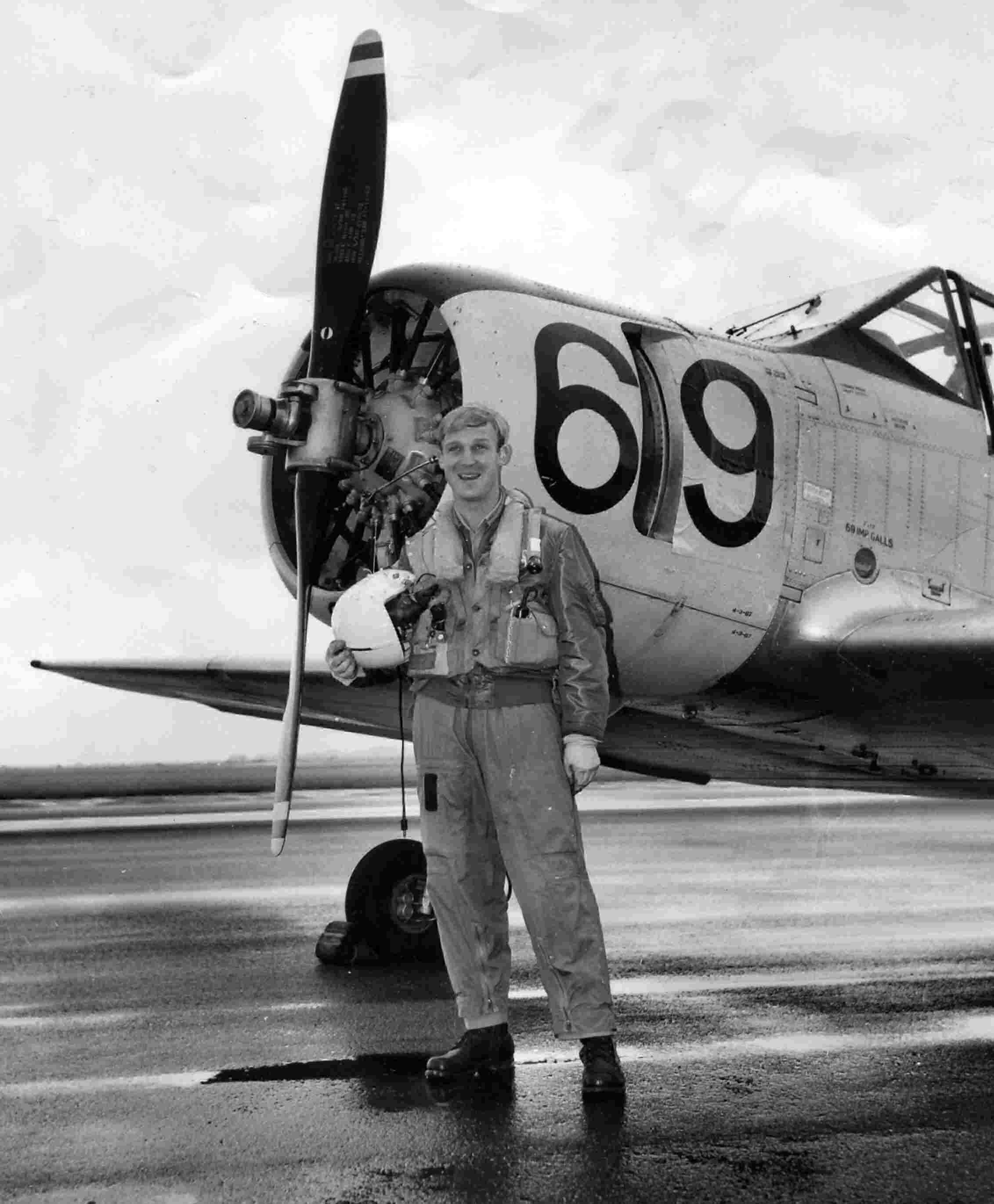
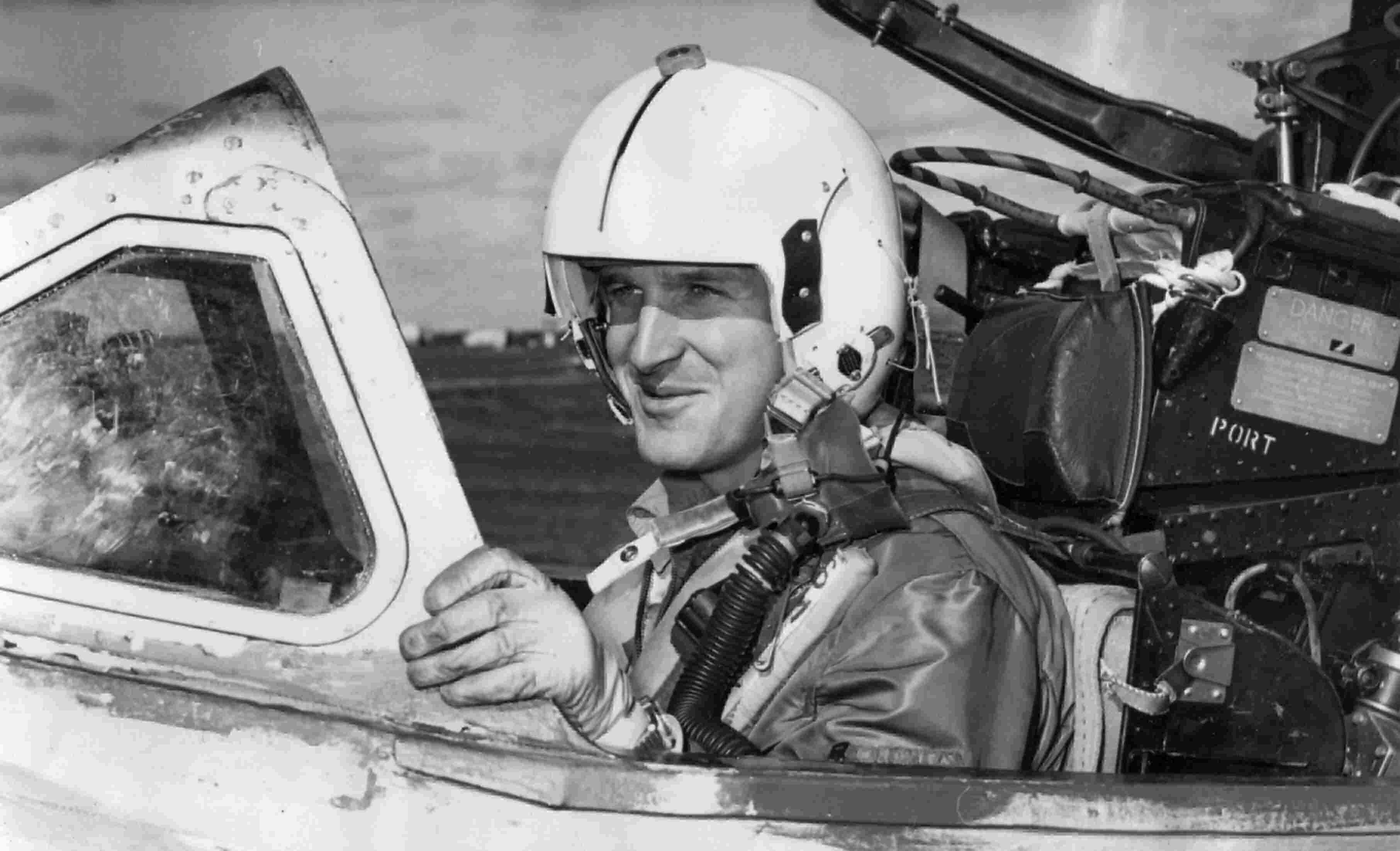 had left Pearce and they flew together a few times.
had left Pearce and they flew together a few times.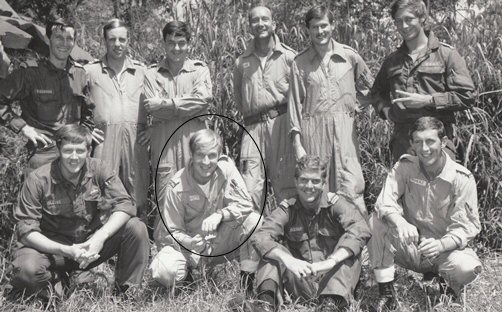
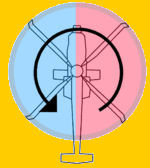 endeavouring to resupply them. The enemy were entrenched close to an
escarpment on the northern side and only about 30 meters from the
Australian platoon's position which meant the aircraft had to fly low
and close to the enemy’s position. Such was the terrain that, after each
pass, the Bushranger had to break right to escape. Whilst that happened,
it was covered by the other Bushranger. On one pass with Ron flying, the
aircraft broke right, the turn being so tight that it experienced
retreating blade stall.
endeavouring to resupply them. The enemy were entrenched close to an
escarpment on the northern side and only about 30 meters from the
Australian platoon's position which meant the aircraft had to fly low
and close to the enemy’s position. Such was the terrain that, after each
pass, the Bushranger had to break right to escape. Whilst that happened,
it was covered by the other Bushranger. On one pass with Ron flying, the
aircraft broke right, the turn being so tight that it experienced
retreating blade stall.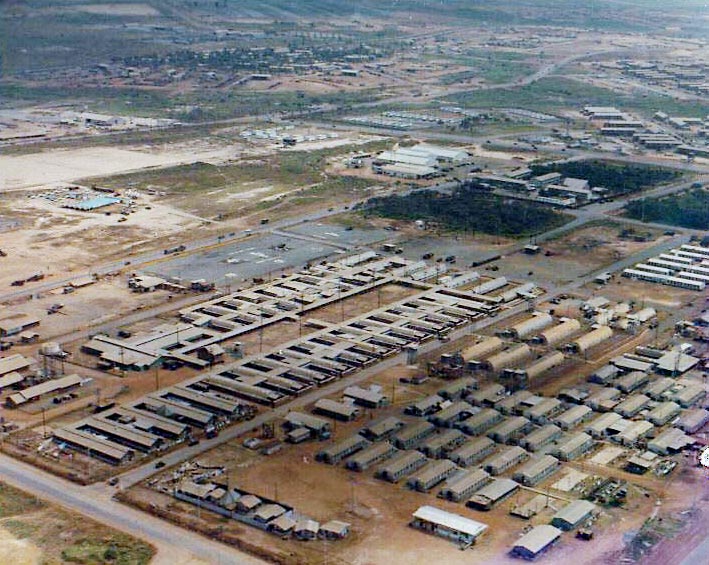 EVAC Hospital at Long Binh. Tragically, he died from his wounds and
became the first RAAF pilot to be killed in action in Vietnam.
EVAC Hospital at Long Binh. Tragically, he died from his wounds and
became the first RAAF pilot to be killed in action in Vietnam.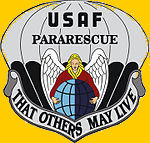
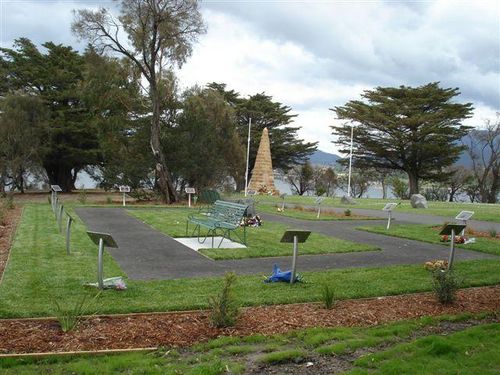
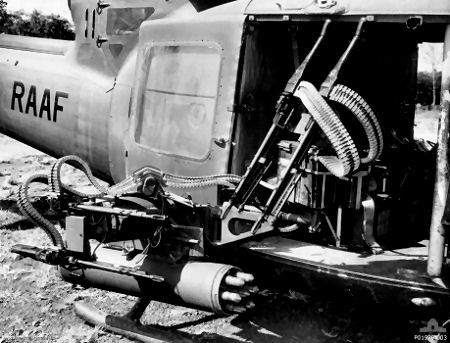 flew
with the US Army but was modified to H model specs then sold to the RAAF
and delivered to 9 Sqn on the 6th February 1968 and converted
to a Bushranger. It flew its first sortie with the RAAF shortly after on
the 14th February.
flew
with the US Army but was modified to H model specs then sold to the RAAF
and delivered to 9 Sqn on the 6th February 1968 and converted
to a Bushranger. It flew its first sortie with the RAAF shortly after on
the 14th February.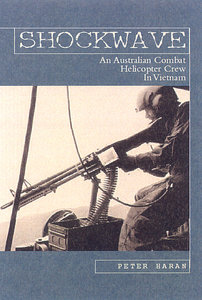 some still carry today.
some still carry today. 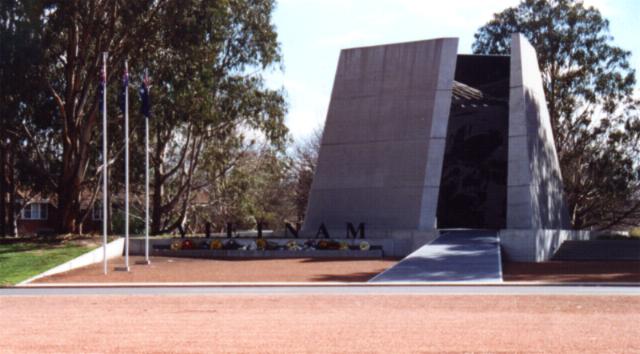
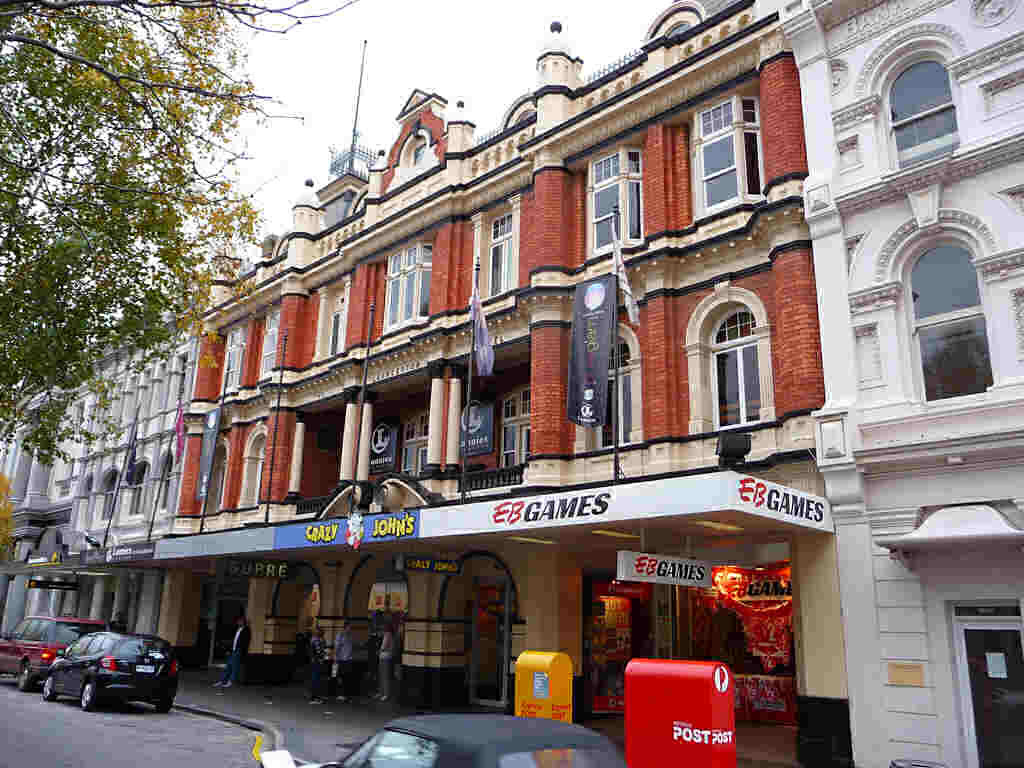 his own gig for many years and while self taught, his sense of rhythm
and beat was greatly admired.
his own gig for many years and while self taught, his sense of rhythm
and beat was greatly admired.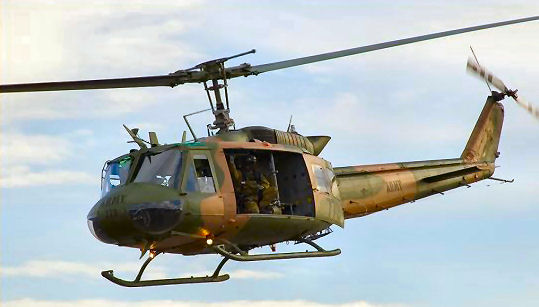

 of
Papua New Guinea and Indonesia. A different peacetime task has been
providing support to United Nations peace keeping forces in the Middle
East. All-white RAAF UH-1Hs with UN markings served with the United
Nations Emergency Force (UNEF) in Egypt at Ismalia (from 1976 to 1979)
and with the UN Multi-National Force and Observers (MFO) in Sinai
(1982-1985).
of
Papua New Guinea and Indonesia. A different peacetime task has been
providing support to United Nations peace keeping forces in the Middle
East. All-white RAAF UH-1Hs with UN markings served with the United
Nations Emergency Force (UNEF) in Egypt at Ismalia (from 1976 to 1979)
and with the UN Multi-National Force and Observers (MFO) in Sinai
(1982-1985). 